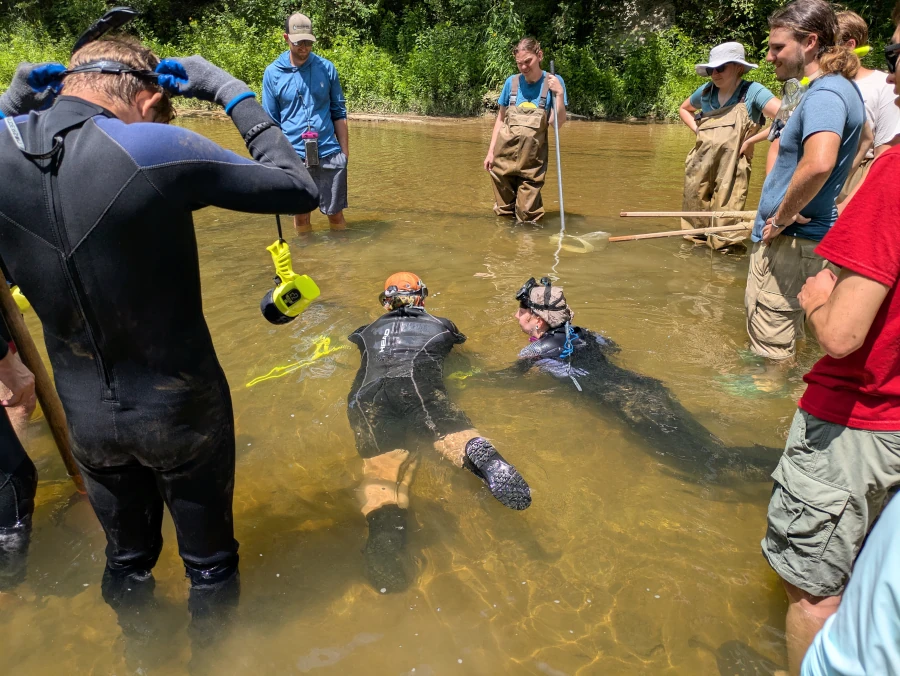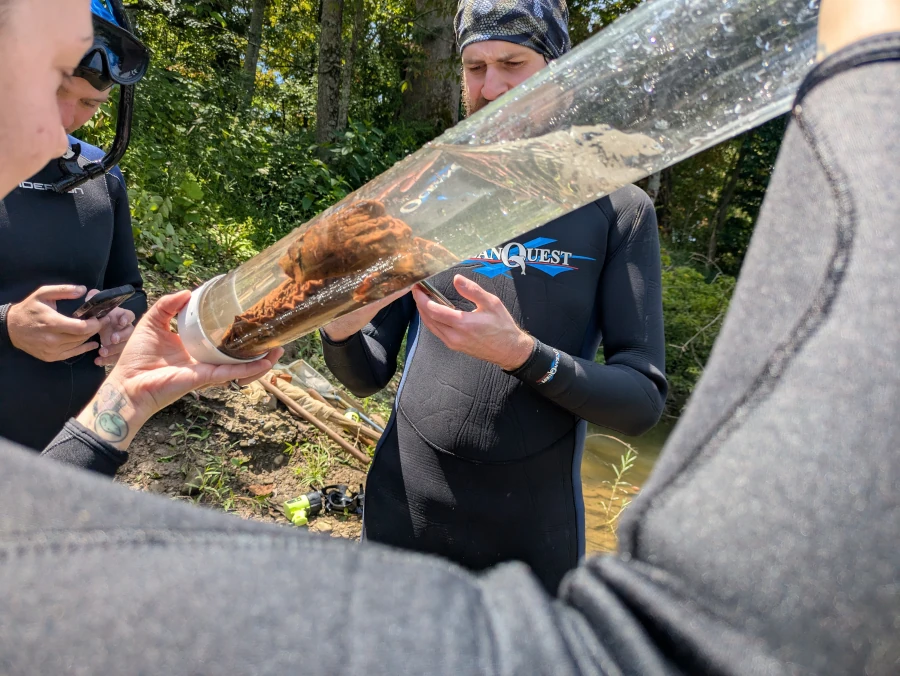Healthy Hellbender Salamanders Populate Captina Creek

In a hellbender salamander survey conducted this summer, teams found healthy, juvenile salamanders and eggs in Captina Creek in Belmont County.
Students from The Ohio State University and employees of Columbus Zoo and the Ohio Department of Natural Resources conducted the survey for the Eastern hellbender salamander, replicating and expanding on a survey completed in 2009. The program is a two-year survey, this summer’s work comprising the first year.
The survey covered various areas all over Eastern Ohio, including Captina Creek.
Team members began survey work in July, spending part of the summer in Belmont County at Barnesville’s Olney Friends School.
The Eastern hellbender salamander is an endangered species. In 2009, agencies found the hellbender population significantly decreased from the first survey completed in the 1980s. From that point on, efforts were made to restore the hellbender populations in Ohio.
“We are doing well for our specific area,” Captina Conservancy executive director Ellie Ewing said. “Captina Creek was one of the few places in the state where there was a good population of Hellbenders.”
Ewing said teams also found a good population of juvenile hellbenders, which is important, because they are necessary to reproduce the population.
Surveyors look in the areas where they know hellbenders are likely to live. Hellbenders thrive on big flat stable rocks where they lay eggs. Teams conduct the surveys using snorkeling equipment and diving lights. Ewing and her team visited the creek during the survey to scope out the work and take pictures.
Captina Conservancy is involved in the Ohio Hellbender Partnership, which is a group of agencies across the state that work to support the species.
The local conservancy also has a long relationship with Greg Lipps, one of the founding members of the organization, who is now working with the Columbus Zoo.
Last month Ewing attended the Ohio Hellbender Partnership group meeting where the agencies provided updates including a presentation from the survey team on initial findings for Hellbenders in our part of Ohio. Team members report finding healthy hellbenders and eggs in places where they were not previously found.
“They know that the hellbenders in Captina are reproducing,” Ewing said. “So things looked positive for the creek.”
Researchers will conduct a second summer of field work for the survey and produce a report after it is completed. Based on information and findings, this will affect how the hellbender restoration program moves forward.
“We’re small and we’re slowly growing, but we’re headed in the right direction,” Ewing said. “We’re helping to keep an already healthy stream healthy.”
Ewing emphasized part of why Captina Creek is healthy because of the people who live in the area and take care of it.
“Sometimes people only think about coal mining, or they think about oil and gas, and they say ‘Who cares about the creek?’” Ewing said. “But actually, a lot of people do care, and that really has a significant impact.”
“The hellbender is part of a robust ecosystem. So the more different types of animals that are thriving in our creeks and streams, the better it is,” Ewing said. “It means more different sources of food and nutrients for all animals and plants. And it all works together for clean water and a healthy ecosystem.”

The Ohio State University, Columbus Zoo and the Ohio Department of Natural Resources teams conduct a recent survey for the Eastern hellbender salamander. (Photo provided)
Barnesville Area News Needs Your Support!
We're dedicated to providing coverage of the local happenings in Barnesville and the neighboring communities.
As a non-profit entity, we rely on the donations of readers like you.
Make a donation today and you'll be helping keep local news alive in the Barnesville area.

